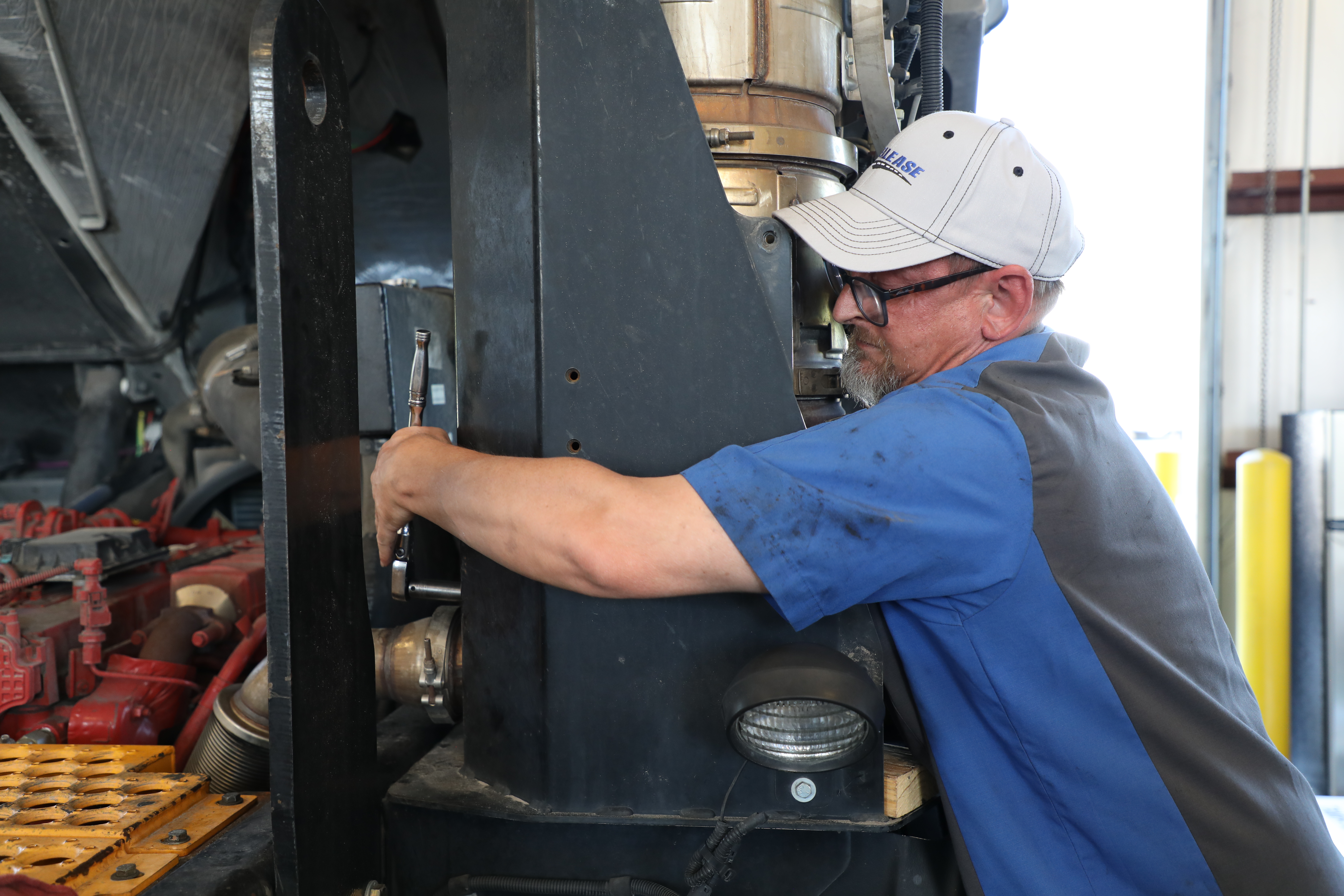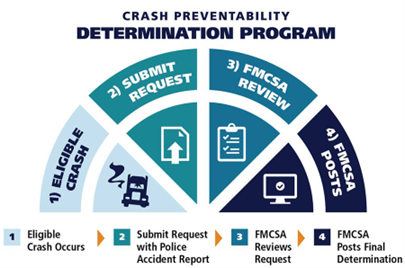Making a Career Path for Your Employees
In today's fast-paced logistics landscape, the demand for skilled drivers and technicians has reached unprecedented levels. As industry leaders grapple with recruitment challenges, we must shift our focus not just on attracting new talent but also on retaining the valuable employees we already have. After all, in a competitive job market, safeguarding your workforce is just as crucial as bringing in new hires. This blog delves into effective strategies for retention, emphasizing the importance of career development, employee appreciation, and fostering a supportive work environment. Discover how these initiatives can lead to reduced turnover, enhanced job satisfaction, and ultimately, a more successful business. Join us as we explore actionable steps to build a committed and skilled team that keeps our industry moving forward.
In this issue:
- Have You Had a Non-Preventable DOT Recordable Accident?
- Crash Eligibility With Four Additional Crash Types Added December 1, 2024
- Do You Have Other Employees That You Want to Receive the Idealease Weekly Safety Bulletin?
Read, share, and/or print this week's Safety Bulletin.
Check out past Idealease Safety Bulletins.
Our industry faces a significant challenge in finding enough drivers and technicians for our trucks. How often do you hear a young child say, “I want to be a truck driver or technician when I grow up”? It seems that weekly, someone asks me how to recruit new talent into these positions. My initial response is always, “What are you doing to retain the good drivers and technicians you already have?”
 In today’s job market, if you’re not actively focusing on retaining your employees, then someone else is likely trying to recruit them away! There isn’t a one-size-fits-all solution to driver and technician retention, but there are several effective strategies you can use to minimize turnover. One key method is to create a clear career path for all employees, often referred to as a driver or technician elevation program. When employees lack a clear understanding of what they can achieve within your company, they may become disengaged and ultimately leave.
In today’s job market, if you’re not actively focusing on retaining your employees, then someone else is likely trying to recruit them away! There isn’t a one-size-fits-all solution to driver and technician retention, but there are several effective strategies you can use to minimize turnover. One key method is to create a clear career path for all employees, often referred to as a driver or technician elevation program. When employees lack a clear understanding of what they can achieve within your company, they may become disengaged and ultimately leave.
It’s worth noting that drivers and technicians often leave for pay increases that are only marginally better than their current earnings. I suggest trying ongoing training to salary increases. This approach benefits both the employer and the employee.
As employers, we gain from having more skilled and knowledgeable technicians, which leads to less turnover and fewer repeat repairs. Technicians can perform their jobs more efficiently while advancing their careers through education and increased earnings. Imagine the cost savings possible when all employees are operating at their highest levels of training and pay!
Additional Tips for Retaining Good Drivers:
1. Review Company Policies and Procedures: Ensure your policies are transparent and realistic. The primary reason drivers leave is the perception of dishonesty.
2. Recognize Drivers as Valuable Assets: Drivers should feel appreciated as essential team members.
3. Involve Drivers in Operations: Engage drivers in important decisions regarding equipment, accident reviews, policy changes, and customer service. Build genuine relationships with them to show care for their well-being and career longevity.
4. Review Pay and Benefits: Ensure your compensation and benefits are competitive with industry standards.
5. Maintain Vehicles: Implement a regular maintenance and inspection program to provide drivers with reliable and safe vehicles.
6. Provide Ongoing Training: Drivers who receive continuous training and have opportunities for advancement are less likely to leave.
7. Adhere to Hiring Standards: Skilled drivers prefer not to work for companies that hire unqualified individuals.
8. Conduct Comprehensive Orientation: Provide thorough and structured training for new drivers so they fully understand company policies and procedures before starting work. Introducing these elements later can lead to feelings of confusion and mistrust.
9. Recognize Achievements: Celebrate milestones such as safe driving records, tenure, and excellent customer service. Personalize recognition with awards like jackets, decals, or plaques, and present them in front of peers for added impact.
10. Conduct Exit Interviews: When a driver leaves, conduct an exit interview—whether in person or using a mailed form—to gain insights into their reasons for leaving. This feedback can be invaluable for making improvements.
Have You Had a Non-Preventable DOT Recordable Accident?
Don’t Forget About the FMCSA Crash Preventability Program!
Motor carriers and drivers have the opportunity to dispute the preventability of certain crashes through the Federal Motor Carrier Safety Administration's (FMCSA) Crash Preventability Determination Program (CPDP). If a crash is classified as non-preventable, it can be removed from your CSA scoring, leading to significant advantages.
How the Program Works:
The FMCSA's CPDP evaluates 21 specific types of crashes and makes updates to the Agency’s Safety Measurement System (SMS), categorizing some crashes as “Not Preventable.” If you were involved in an eligible collision, you can file a Request for Data Review (RDR) via the Agency's DataQs system. Your submission must include:
- The required police accident report
- Supporting documents, photos, or videos
Once the FMCSA determines a crash is “Not Preventable”:
- Crash Indicator BASIC Adjustment: The incident will be excluded from the calculation of the Crash Indicator Behavior Analysis and Safety Improvement Category (BASIC) in the SMS.
- Visibility of Determinations: Despite being removed from scoring, “Not Preventable” crashes will still be recorded on the FMCSA website, along with the determination.
- Pre-Employment Screening Program (PSP) Updates: An annotation will be included in the PSP to indicate that the crash was not preventable, enhancing employment opportunities for drivers.
Benefits of a Non-Preventable Determination:
If a crash is deemed “Not Preventable,” the FMCSA will:
- Improve Carrier Scores: Eliminate the crash from the carrier’s “Crash Indicator” score within the CSA system, decreasing the chances of targeted enforcement actions.
- Enhance Driver Employability: Include a note in the PSP that acknowledges the crash was “Not Preventable,” minimizing the likelihood of the driver being overlooked during the hiring process due to their crash history.
Crash Eligibility With Four Additional Crash Types Added December 1, 2024
Starting December 1, 2024, the Crash Preventability Determination Program (CPDP) will have an expanded eligibility list for crashes that occur on or after this date. Crashes that happened before this date will be assessed based on the old standards. It's important to mention that the FMCSA cannot review accidents that are more than five years old. For the eligibility criteria regarding accidents that took place before December 1, 2024, click here.
Eligibility Criteria for the CPDP
The following crash scenarios are eligible for review under the expanded program:
- Rear-End Collision: The CMV was struck in the rear by another motorist.
- Side Collision (Rear): The CMV was struck on the side at the rear by another motorist.
- Side Collision (Same Direction): The CMV was struck on the side by another motorist traveling in the same direction.
- Wrong-Way Driving: The CMV was struck because another motorist was driving in the wrong direction.
- Illegal Turn: The CMV was struck because another motorist was making a U-turn or performing an illegal turn.
- Stopped or Parked Vehicle: The CMV was struck while legally stopped at a traffic control device or parked, including while unattended.
- Failure to Slow or Stop: The CMV was struck because another motorist did not slow or stop in traffic.
- Traffic Control Violation: The CMV was struck because another motorist failed to stop at a traffic control device.
- Impairment: The CMV was struck because another individual was under the influence (or a related violation, such as operating while intoxicated) per the jurisdiction’s legal standard.
- Medical Emergency: The CMV was struck because another motorist experienced a medical issue contributing to the crash.
- Driver Fatigue: The CMV was struck because another motorist fell asleep.
- Distracted Driving: The CMV was struck because another motorist was distracted (e.g., using a cell phone, GPS, interacting with passengers).
- Debris or Cargo: The CMV was struck by cargo or equipment from another vehicle, or debris (e.g., fallen rocks, trees, or unidentified items in the road).
- Infrastructure Failure: The CMV crash resulted from an infrastructure failure.
- Animal Collision: The CMV struck an animal.
- Suicide Attempt: The CMV crash involved a suicide death or suicide attempt.
- Entering Roadway: The CMV was struck because another motorist was entering the roadway from a private driveway or parking lot.
- Loss of Control: The CMV was struck because another motorist lost control of their vehicle.
- Non-Motorist Crash: The CMV was involved in a crash with a non-motorist.
- Unusual Crash Type: The CMV crash involved rare scenarios (e.g., being struck by an airplane, skydiver, or a deceased driver).
- Video Evidence: Any other crash involving a CMV where video evidence demonstrates the sequence of events leading to the crash.
FMCSA Webinar Next Thursday on Changes to the Compliance Safety and Accountability (CSA) Safety Measurement System (SMS).
Date & Time:
January 16, 2025, 2:00 PM CST
Join the Federal Motor Carrier Safety Administration (FMCSA) for a webinar series to learn about the upcoming changes to the Safety Measurement System (SMS) methodology used to prioritize carriers for Agency intervention.
Part 1 of this series will cover the following three SMS enhancements: 
- Reorganized BASICs – Now called “Compliance Categories.”
- Violation Groups – Groupings of similar violations for better clarity.
- Simplified Severity Weights – Streamlined weighting of violations for easier understanding.
FMCSA is in the process of redesigning the SMS web system to incorporate the outcomes of the new methodology. The expected launch date for the updated system will be revealed in the coming months. In the meantime, FMCSA will maintain the use of the current SMS to prioritize motor carriers for intervention.
This webinar is a follow-up to the series held in March 2023 during the open comment period for the proposed changes. The approval of these updates was officially announced in the Federal Register notice on November 20, 2024.
Why is FMCSA Updating SMS?
The FMCSA has gathered input from a wide range of stakeholders, including government agencies at various levels, industry experts, non-profit organizations, advocacy groups, researchers, and the public, to identify improvements to the Safety Measurement System (SMS). These enhancements aim to strengthen the existing foundation of SMS while increasing its fairness, accuracy, and clarity.
Where Can I Learn About the Approved Changes?
Detailed information about all the approved changes to SMS is available on the CSA
Prioritization Preview website.
*The Idealease Safety Bulletin is provided for Idealease locations and their customers and is not to be construed as a complete or exhaustive source of compliance or safety information. The Idealease Safety Bulletin is advisory in nature and does not warrant, guarantee, or otherwise certify compliance with laws, regulations, requirements, or guidelines of any local, state, or Federal agency and/or governing body, or industry standards.
